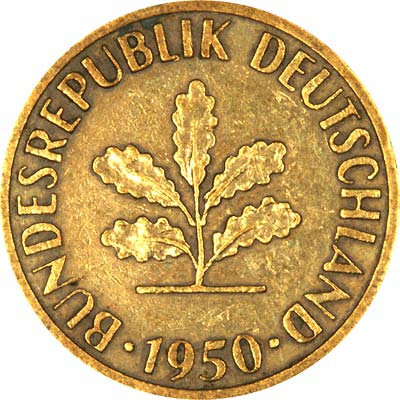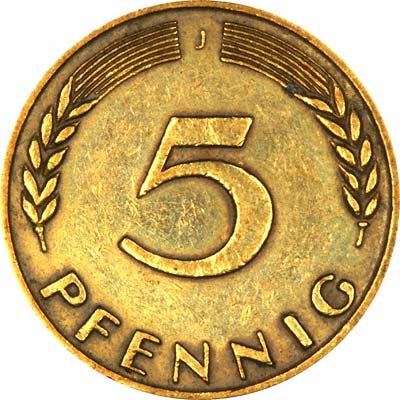| The Very Highest Quality German Coins... |
| German Coins |
|

|
|
|
|
|
|
|

|
|
|
Birth of the Deutschmark
The Soviet Union had been abusing the privilege of issuing Reichsmark currency, resulting in high inflation, but the allies could not agree amongst themselves on the issue of currency reform within occupied Germany. However, Ludwig Erhard the Director of Economics on the Bizonal Economic Council, announced the creation of the Deutschmark on the 20th of June 1948. A few weeks later, Erhard defied the allied council by abolishing economic controls that had been implemented by the Nazis but which the allies had not removed for their own reasons. He announced this decision on a Sunday to prevent the allies from countermanding the order.
A Robust Currency
In contrast to what had happened following the First World War, the new German currency proved to be a strong one that resisted the inflationary pressures that were afflicting the currencies of many of the victor nations of World War II. The Deutschmark became a source of national pride in nation that had suffered defeat in two catastrophic wars well within living memory.
Coins of the Deutschmark
In 1949, the Federal Republic of Germany was officially created from the allied zones of the Western Allies (The Soviet Zone became East Germany). Coins dated 1948-49 (before the FRG came into existence) were issued on behalf of the Bank of the German States (Bank Deutscher Lander), afterwards, they were issued on behalf of the Federal Republic of Germany (Bundesrepublik Deutschland). The 1,2,5 and 10 Pfennig coins were made of copper, bronze and brass plated steel, denominations above this, such as the 50 Pfennig, 1DM, 2DM and 5DM were struck in copper-nickel and later copper-nickel clad nickel.
Following the Reunification of Germany in 1990, East Germany adopted the Deutschmark as its currency, exchanged at par in amounts up to 4000DM, but at 2:1 and 3:1 in larger amounts.
Adoption of the Euro
In 2002, Germany abandoned the Deutschmark in favour of the Euro. In common with all the other countries joining the Eurozone, the coins featured a common reverse, with a national design on the obverse.
Postage & Packing, Per Order:
UK: At buyer's Risk £3.50 or
Fully Insured £9 (Usually by Royal Mail Special Delivery)
USA: Airmail at buyer's risk $10 or
Fully Insured $20
For further details, please see our Postage & Packing page.
Order Form - UK
Order Form - USA
Order Form - EU
Order Form - Rest of World
2002 Euro Coin Sets - All 12 Major Countries
2002 Euro Coins Sets - Official Issues 15 States
Euro Coins
Euro Coin Relative Sizes
Euro Zone
World Coins & Sets - Who Issued What?
If you want to find the value of a coin you own, please take a look at our page I've Found An Old Coin, What's It Worth?
If you have an enquiry about any of our Silver Coins,, we'd be happy to answer you, but please note it may be quicker to telephone us. Please see the Contact Us page of our website.
Coins Wanted
We make an active market in almost all world coins, including German coins of the Weimar Republic or other periods. If you have any of these coins to sell, please contact us, or post them to us for appraisal and offer.
| ...at the Lowest Possible Price |
|
32 - 36 Harrowside, Blackpool, Lancashire, FY4 1RJ, England. Telephone (44) - (0) 1253 - 343081 ; Fax 408058; E-mail: The URL for our main page is: https://24carat.co.uk | Chard(1964) Ltd |